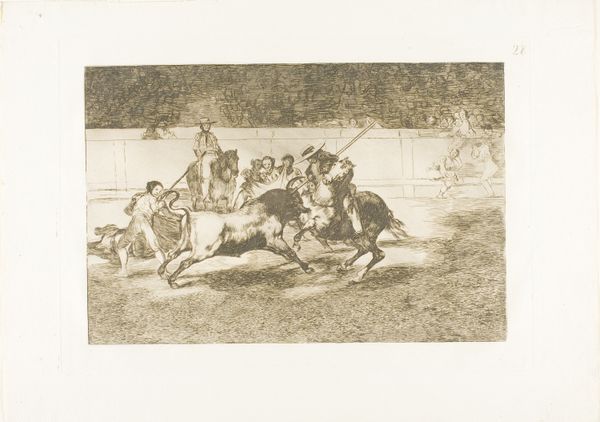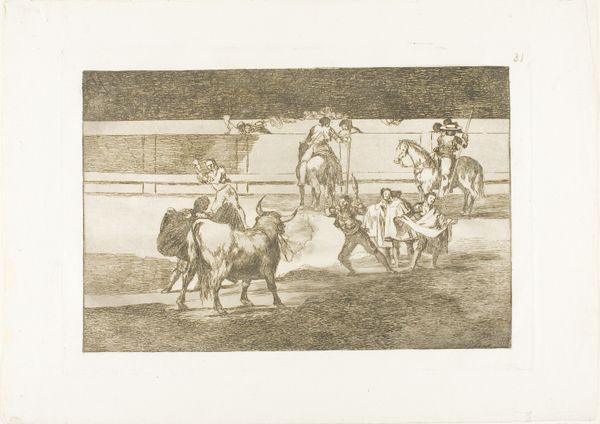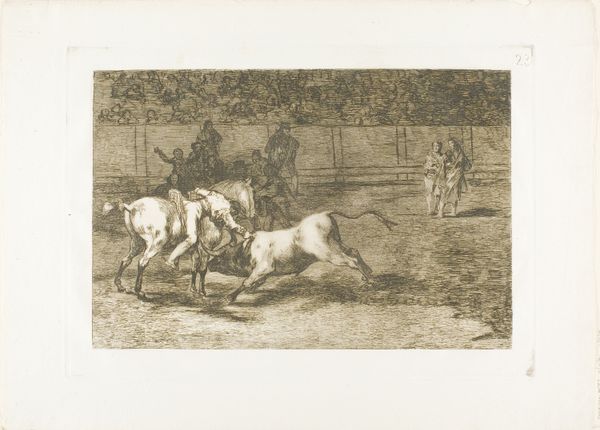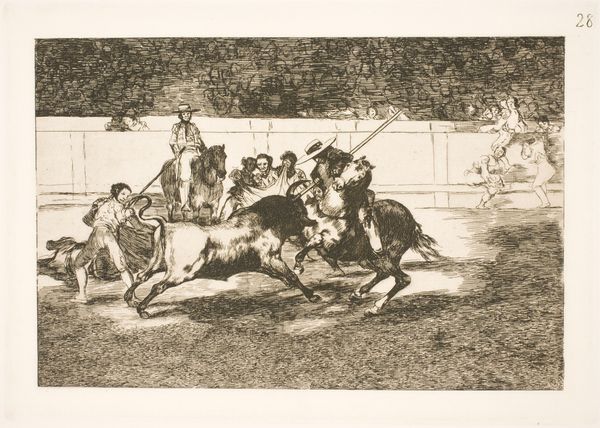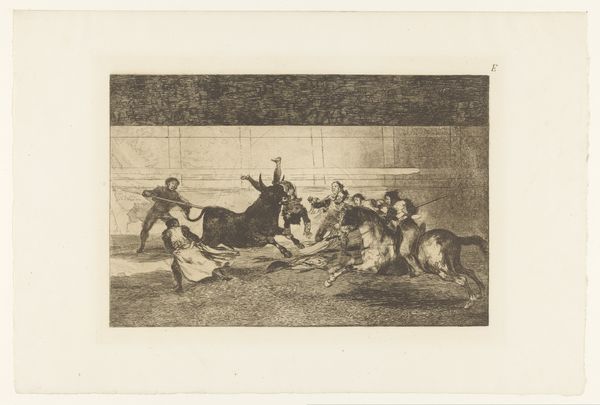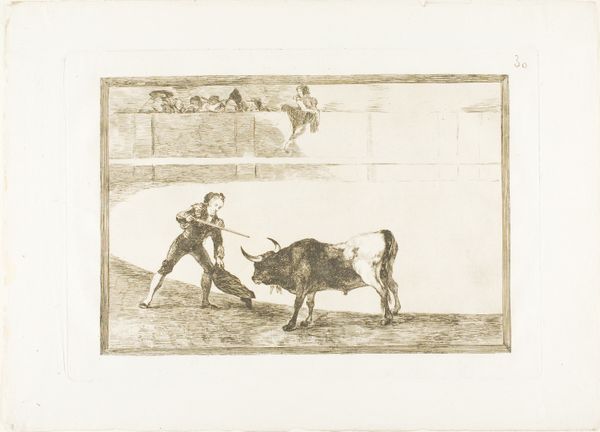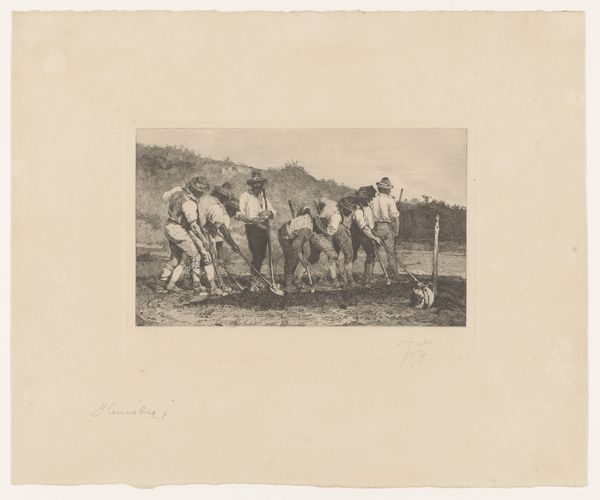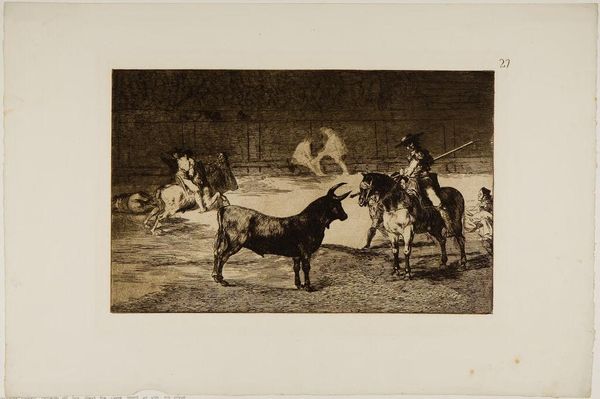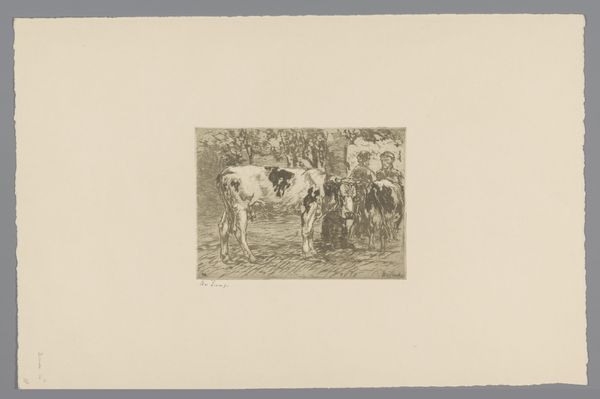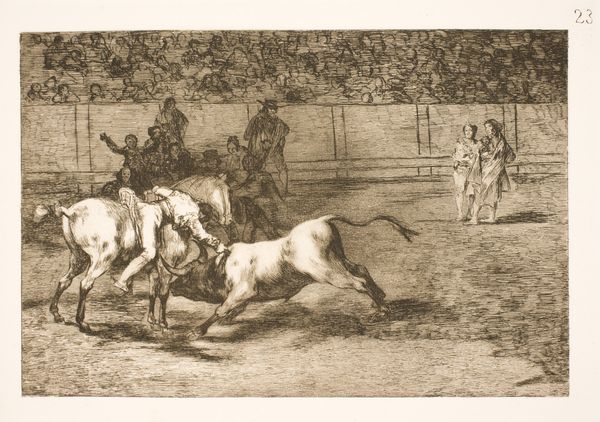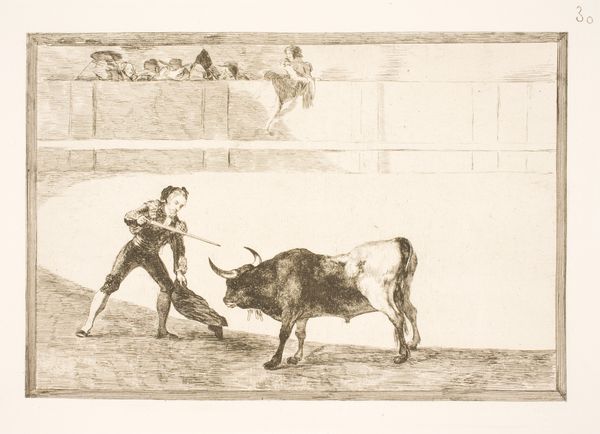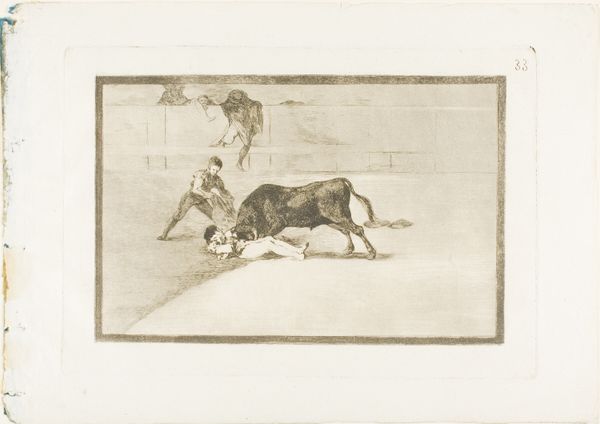
Pepe Illo making the pass of the 'recorte', plate 29 from The Art of Bullfighting Possibly 1815 - 1816
0:00
0:00
drawing, print, etching, paper
#
drawing
# print
#
etching
#
paper
#
genre-painting
#
history-painting
Dimensions: 203 × 313 mm (image); 244 × 352 mm (plate); 320 × 443 mm (sheet)
Copyright: Public Domain
Curator: Look closely at Francisco Goya’s "Pepe Illo making the pass of the 'recorte'," an etching and aquatint on paper from his series *The Art of Bullfighting*, likely completed between 1815 and 1816. Editor: There's an immediacy here, like a fleeting moment captured. I can almost feel the hot breath of the bull, the dust swirling in the arena. There's so much tension packed into that little space. Curator: Yes, and it’s important to consider Goya’s own life during its creation. Spain was in turmoil, and bullfighting served as a potent symbol of Spanish identity and national pride—or, perhaps, a distraction from deeper societal problems. The etching process itself—the biting of acid on metal—allowed for the stark contrasts that dramatize the life-and-death stakes of the bullfight. Editor: I hadn't considered the acid etching quite that way! For me, there's a raw quality that elevates it, a sense of theater tinged with violence that's mesmerizing and terrifying. I imagine Goya wrestling with Spain's identity in his studio, just as Pepe Illo faced the bull in the arena. They are both performing. It is brutal. Curator: Goya was also keenly aware of his market. Prints like this were accessible; they brought the spectacle of the bullring into the homes of a wider audience. We see Goya manipulating the means of reproduction, in essence democratizing the art experience but simultaneously perpetuating a complicated and often problematic tradition. Editor: True, and the composition reinforces that duality. We’re close enough to smell the fear but far enough to feel like spectators, detached yet implicated. Look at the shadowy figures looming in the background—the indistinct crowd that has come to consume violence in their hunger. It is a potent depiction. Curator: And to connect this back to our opening reflection: viewing this work prompts questions about spectacle and identity that can still cause very powerful and raw emotional responses even in the modern day. The image invites speculation on Spain’s historical relationship with both violence and spectacle. Editor: Yes, exactly. We are both spectator and participant here, forced to confront an event and a historical legacy that makes this simple, intimate etching surprisingly profound.
Comments
No comments
Be the first to comment and join the conversation on the ultimate creative platform.
